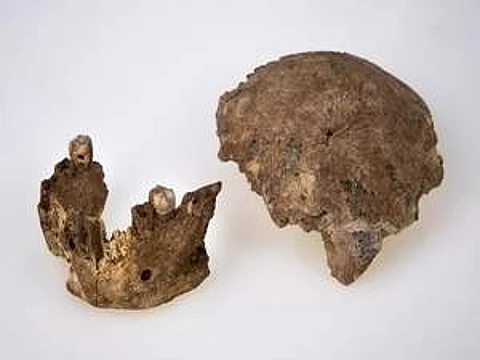

An international group of archaeologists has discovered a missing piece in the story of human evolution. Excavations at the Israeli site of Nesher Ramla have recovered a skull that may represent a late-surviving example of a distinct Homo population, which lived in and around modern-day Israel from about 420,000 to 120,000 years ago.
As researchers Israel Hershkovitz, Yossi Zaidner and colleagues detail in two companion studies published in Science, this archaic human community traded both their culture and genes with nearby Homo sapiens groups for many thousands of years.
The new fossils Pieces of a skull, including a right parietal (towards the back/side of the skull) and an almost complete mandible (jaw) were dated to 140,000 to 120,000 years old, with analysis finding the person it belonged to wasn't fully H sapiens. Nor were they Neanderthal, however, which was the only other type of human thought to have been living in the region at the time.
Instead, this individual falls right smack in the middle: a unique population of Homo never before recognised by science. Through detailed comparison with many other fossil human skulls, the researchers found the parietal bone featured archaic traits that are substantially different from both early and recent H sapiens.
In addition, the bone is considerably thicker than those found in both Neanderthals and most early H.sapiens. The jaw too displays archaic features, but also includes forms commonly seen in Neanderthals. The bones together reveal a unique combination of archaic and Neanderthal features, distinct from both early H sapiens and later Neanderthals. Are there are more of these people? The authors suggest fossils found at other Israeli sites, including the famous Lady of Tabun, might also be part of this new human population, in contrast to their previous Neanderthal or H sapiens identification.
The mysterious Nesher Ramla Homo may even represent our most recent common ancestor with Neanderthals. Its mix of traits supports genetic evidence that early gene flow between H sapiens and Neanderthals occurred between 400,000 and 200,000 years ago. In other words, that interbreeding between the different Homo populations was more common than previously thought.
